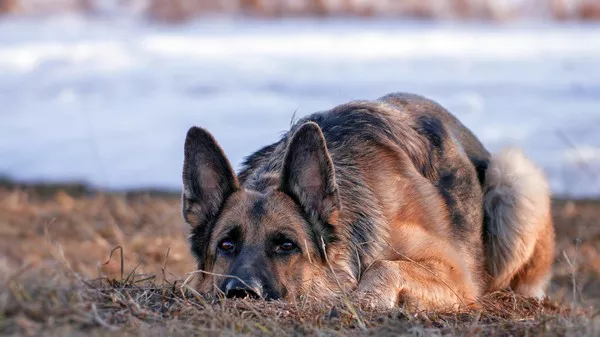Shepskies, a crossbreed between German Shepherds and Siberian Huskies, are beloved for their intelligence, loyalty, and striking appearance. However, like any dog, they have specific exercise requirements to maintain their physical and mental well-being. Understanding the exercise needs of Shepskies is crucial for their health and happiness. In this comprehensive guide, we’ll explore how much exercise Shepskies need, factors influencing their activity levels, and tips for ensuring they get the right amount of exercise.
Understanding Shepskies:
Before delving into their exercise needs, it’s essential to understand the unique characteristics of Shepskies. These hybrid dogs inherit traits from both parent breeds, resulting in a blend of energy, athleticism, and intelligence. German Shepherds are known for their work ethic and versatility, while Siberian Huskies possess endurance and a love for outdoor activities. Shepskies typically exhibit a combination of these traits, making them energetic and adventurous companions.
Factors Influencing Exercise Needs:
Several factors influence the exercise requirements of Shepskies:
Age: Like all dogs, Shepskies’ exercise needs vary depending on their age. Puppies have boundless energy and require frequent, short bursts of activity to support their growth and development. Adult Shepskies typically need more structured exercise to maintain their physical health, while senior Shepskies may require gentler activities to accommodate age-related changes.
Health: The health status of a Shepsky also plays a significant role in determining their exercise needs. Dogs with underlying health conditions or mobility issues may have limitations on the type and intensity of exercise they can participate in. It’s crucial to consult with a veterinarian to develop an appropriate exercise plan tailored to the individual needs of the dog.
Temperament: Shepskies can exhibit a range of temperaments, from laid-back and easygoing to highly energetic and driven. Understanding your Shepsky’s temperament will help tailor their exercise regimen to suit their personality. High-energy Shepskies may require more vigorous exercise to prevent boredom and destructive behaviors, while calmer individuals may be content with shorter, less intense activities.
Environment: The environment in which a Shepsky lives also influences their exercise needs. Dogs residing in urban areas may have limited access to open spaces for running and playing, necessitating alternative forms of exercise such as walking, hiking, or interactive games. Conversely, Shepskies living in rural or suburban settings with ample outdoor space may have more opportunities for off-leash activities and exploration.
Recommended Exercise Routine:
While the exercise needs of Shepskies can vary based on individual factors, a general guideline can help ensure they receive adequate physical activity:
See Also:Best Dry Food for German Shepherds
Daily Walks: Regular walks are essential for Shepskies to fulfill their exercise requirements and mental stimulation. Aim for at least 30 to 60 minutes of brisk walking per day, divided into multiple sessions if necessary. Walking provides opportunities for socialization, exploration, and bonding with their human companions.
Active Play Sessions: Incorporate active play sessions into your Shepsky’s daily routine to engage their physical and mental faculties. Activities such as fetch, tug-of-war, agility training, and obedience exercises are excellent ways to keep them stimulated and physically fit. Rotate between different activities to prevent boredom and promote variety.
Outdoor Adventures: Take advantage of outdoor adventures to provide your Shepsky with opportunities for off-leash running and exploration. Hiking, jogging, biking, or visiting dog parks are great ways to allow them to burn off excess energy and indulge their natural instincts. Ensure your Shepsky is trained to recall reliably before allowing off-leash activities in unfenced areas.
Mental Stimulation: In addition to physical exercise, Shepskies require mental stimulation to prevent boredom and destructive behaviors. Incorporate puzzle toys, interactive feeders, and training sessions into their daily routine to challenge their intellect and reinforce positive behaviors. Mental stimulation is just as important as physical exercise for maintaining a happy and well-balanced Shepsky.
Adapt to Individual Needs: Pay attention to your Shepsky’s response to exercise and adjust their routine accordingly. Monitor signs of fatigue, overexertion, or discomfort, and modify the intensity and duration of activities as needed. Older or less active Shepskies may require shorter, gentler exercises, while younger or more energetic individuals may thrive on longer and more vigorous workouts.
Conclusion:
Meeting the exercise needs of Shepskies is essential for their overall health, happiness, and well-being. By understanding their unique characteristics, considering individual factors, and implementing a balanced exercise routine, you can ensure that your Shepsky remains physically and mentally stimulated. Remember to consult with a veterinarian for personalized recommendations and make adjustments to their exercise regimen as necessary. With proper care and attention, you can provide your Shepsky with a fulfilling and active lifestyle that strengthens your bond and enhances their quality of life.
Related Topics:




















